Age Of Sigmar: Soulbound – Roleplaying Game Review | Cubicle 7
November 24, 2020 by brennon
It's time to dive into a review of Cubicle 7's roleplaying game set against the backdrop of The Mortal Realms! Age Of Sigmar: Soulbound's Core Rulebook is a fascinating book which is packed with information for those that love this new take on Fantasy from Games Workshop and it offers it up on a suitably heroic platter.
Before we get into that though, Warhammer: Age Of Sigmar and myself have had a pretty interesting relationship. I was at first appalled at the idea that I was going to be losing The Old World and then gradually I was drawn in by the idea of cutdown rules, interesting new armies and the way that Games Workshop had reinvented the idea of what Warhammer and Fantasy were all about, both aesthetically and in terms of lore. Then I started to drift.
The Right Entry Point Into The Mortal Realms?
My friends weren't interested in the game and collecting all these massive armies and I couldn't bring myself to paint another mass battle wargame. I was taken at times by the idea of Warhammer Underworlds and Warcry and I still think if I were to wargame in the Mortal Realms, this is where I would reside but nothing had overly grabbed my attention. However, when news came about Soulbound I was mightily intrigued. A roleplaying game would require me to paint nothing and it would instead allow me to explore the lore and background of the Mortal Realms without the need for a mountain of plastic to be involved.
I really enjoyed the previews we saw up until the release of Soulbound from Cubicle 7 looking at the fascinating new Character Archetypes and the mechanical systems which we'll get into later. One thing that also spoke to me was the way in which they were going to be tackling the "feel" of Soulbound and the Age Of Sigmar universe. This wasn't the downtrodden grimdark nature of games like Warhammer Fantasy Role-Play (which I do really love) but instead something more heroic and mythical. Playing a game as more suped-up characters right from the very beginning had a certain appeal and it really works alongside the ideas and themes of the Mortal Realms.
This meant that when the rulebook landed in my lap I was very eager indeed. I had been loving doing a bit of reading behind Age Of Sigmar including some of the initial Black Library offerings and the Audiobooks following the return of Gotrek Gurnnison. This combination of a fascination with the lore of the Mortal Realms and just how much had been written already plus the mechanics present in the Core Rulebook meant that I was itching to give this game more of a go with my friends!
Crafting Your Age Of Sigmar: Soulbound Characters
One of the core concepts behind this Age Of Sigmar Roleplaying Game is that you are part of a group known as the Soulbound (hence the title of the game). You play characters taken from the various factions of the Grand Alliance Of Order and linked together through a shared magical connection. The Soulbound often find themselves separate from the massive goings-on within the Mortal Realms and instead are charged with seeking out adventure, quests and the like which help stabilise the Mortal Realms in a less obvious fashion.
This forms a great starting point from which to not only form a group but also begin your adventuring in the Mortal Realms. It means that you can make very diverse characters and (if the group agrees) work together in order to solve a problem which affects you all in different ways. A "murderous" Daughter Of Khaine might find herself working alongside an Excelsior Warpriest who has very different views on the world because by combining their skills; they can help defeat a greater evil that effects them all.
This is the perfect kind of group building and character creation for someone like me who loves the roleplaying aspect of these games. It means that a group will have its elements of internal friction and you'll have secrets from each other that might come out in the midst of play! Maybe that Witch Aelf who has been working with you has other ideas as to what to do with that magical gizmo you just found all along.
I always find this much more interesting than simply being together as a group because "you're all the good guys". But, this leads me on to talking about actually making characters in Soulbound.
Thankfully, Cubicle 7 has made this very easy. When you get started in the game you can either choose to pick from one of over twenty Archetypes or make a unique character from scratch. Archetypes get you going very quickly with their Attributes already assigned and with a new player simply choosing a few Skills and Talents to make them more unique.
You can also make a character entirely from scratch if one hasn't already caught your eye from the list of Archetypes. This means that you have a bit more freedom over where you place your Attributes and what Skills and Talents you choose. Maybe you really wanted to make a Duardin from the Cities Of Sigmar rather than a Fyreslayer? Well, you can do that!
However you approach building your character, you'll have one of these fascinating and diverse personalities completed in no time. This is one of the cool things about Soulbound as a whole. You could have a group which features a dour Stormcast Eternal, a grim Fyreslayer, a silent but deadly Deepkin and then a towering Kurnoth Hunter...all in one group!
This is all tied together mechanically too. Each Binding (the name for a group of heroes) of Soulbound is also able to draw on a combined resource called Soulfire. You also have a shared Doom too, an overarching currency which is used by the GM in order to track the change in the world around the party and also more directly to make their villainous foes more deadly!
You'll also find a group is tied together through other mechanical elements too like Short and Long Term Goals which you are all striving to accomplish. These are something that your party and GM come up with before you start on each adventure and give you something to all focus on even if you've come from very different corners of the Mortal Realms. This feeds into an idea of both episodic play and long-form narratives. You can have fun with Soulbound in one-off sessions and as part of a grander storyline that unfolds over months and years.
Easy character creation and plenty of ways to bind the group together make Soulbound feel immediately inviting and this continues once you actually get stuck into the nitty-gritty of the game too!
The Core Mechanics Of Age Of Sigmar: Soulbound
At the core of Soulbound sits a set of rules which will be familiar to some but have been tweaked to make them suit the more heroic nature of The Mortal Realms. Much like with other games like Warhammer Fantasy Role-Play or Wrath & Glory you'll be faced with tests which can either Common, Opposed or Extended.
When called to take a test you'll be given a difficulty number by the GM. This is often represented like this "DN 5:1" as an example. The first number represents the target number for the test which ranges from two through to six on a D6. In this case, five. The second number indicates the number of successes you need in order to accomplish your task. In this case, the player would simply need one roll of five or more in order to achieve the desired result.
A player's dice pool for any test is a mixture of two things. In most cases, this will be one of their appropriate Skills, and then the Attribute that matches it. If someone was trying to work out how a magical implement has been put together then they could combine their Arcana and Mind together to make a pool of dice with which to complete their test. If they were heaving a vast stone column out of the way then it might be Might and Body. You get the idea.
The same applies in Opposed tests as it does in Common tests with both the player and the GM rolling their appropriate dice pools and then comparing the number of successes against each other. In this case, you might also be called to make tests which chart the level of success you've achieved in a certain action. Passing with just one success means that you did just what you needed to do. If you succeded and managed to get two or three more results more than needed then you could gain minor or major benefits for doing so, all of which is determined by the GM.
Training within each Skill offers you more dice to accomplish an action but each Skill also comes with a Focus too. Focus allows you to upgrade the roll of one or more dice in a test (dependant on your Focus amount) to help you pass. This means that there are plenty of ways within the core mechanics of Soulbound to mitigate bad luck and enhance that heroic feeling that each character is inherently created with.
Talents provide you with an additional set of actions and bonuses that you can utilise and end up creating new and unique ways for you to get through situations which could range from breaking someone's face through to understanding the complexities of the diverse and exotic Mortal Realms.
Fighting In Age Of Sigmar: Soulbound
Diving into Combat, which is a big part of Soulbound, you'll instead find yourself comparing your abilities against what's called The Ladder. When you work out your Melee, Accuracy and Defence statistics during character creation you'll place your scores on a table which ranges from Extraordinary through to Poor. When you go to strike, shoot or indeed get attacked you'll compare your place on The Ladder to your opponent and that dictates the DN that you (or they) will be aiming for.
As with everything in a roleplaying game, there are nuances to all of this. You might be fighting from elevation or a place of advantage, you could be wading through difficult terrain or perhaps you're striking with multiple weapons at once. Regardless of what complication gets added into the mix though, much has been done to make sure that the process flows very easily and I found that it was easy to just see how the DN shifted based on your circumstances.
Damaging your enemies is also really easy and flows nicely on from your strike against your opponent. First, you'll deal damage to an opponents Toughness (minus things like Armour and such) and then beyond that, you'll do Wounds which vary from Minor through to Serious and Deadly. In most cases, your foes won't have Wounds and the vast majority of enemies just have Toughness that, once gone, slaughters them instantly. Key characters and NPCs might have Wounds though and marks them out as much more powerful individuals for your party to face. Wounds, of course, have more implications for you as heroes and even though your essentially superheroes in Soulbound that doesn't mean you can't go down.
This is where I first got that taste of the "heroic" nature of Soulbound. More often than not you will be more powerful and deadly than your opponents and there is a real power fantasy running through the game where you can easily handle yourself against hordes of enemies. It wouldn't be very fun if the Stormcast Eternal, a living weapon forged by the God-King couldn't handle themselves against a band of Blood Warriors for example.
You'll be happy to know that magic and such is very easy to get stuck into as well. In a world where you're mighty heroes are smashing apart enemies left right and centre with their blades you don't want to find the spellcasters stuck pouring over incredibly detailed lists of how to cast immense spells. Much like with any normal test it's all run through the same DN system and it's easy to follow spells through to their outcome.
This sense of heroics combined with the very free-flowing way in which you can move around the "battlefield" in zones rather than hard-and-fast movement distances means that there is a really cinematic quality to the way in which Soulbound plays. You feel like a badass when you're reaping through your foes and it genuinely then feels threatening when you come up against something with a way to bring you down. It's a bit like feeling like Captain America or Thor smashing up Thanos' thugs before finally coming up against his Black Order and Thanos himself. It makes for some exciting and different roleplaying moments at the tabletop.
Roleplaying In A Very Different World
The simple mechanics and ease at which you can dive into doing anything in the game are layered nicely over the much more complex world of The Mortal Realms. This isn't your standard Fantasy setting and instead, everything in Age Of Sigmar is very much larger than life. It feels like the game was been crafted to make it easy for you to be awesome in a definitively awe-inspiring world.
Because of this though, the Core Rulebook also comes with a plethora of information with which to familiarise yourself with. A significant portion of the book is given over to explaining all of the similar-but-different races in Age Of Sigmar plus The Mortal Realms, its Gods, The Great Parch and the Realm Of Aqshy in which you find yourselves.
Each section of the book which is dedicated to the different Realms and the powers that be also come with a few adventure hooks, something I've enjoyed seeing in Cubicle 7's work of late. You could read through these and have a fun idea of an adventure to run in one of the very unique portions of the Mortal Realms.
This is all very handy indeed and whilst you can easily find some interesting touchstones for players to latch onto (Duardin are still Dwarves, Idoneth are still Elves), there is still a lot that you'll have to introduce your players too, especially if they are unfamiliar with Age Of Sigmar. I would suggest that your players at the very least read through the appropriate sections of background in the Core Rules to get a feel for how their characters interact with the wider world.
The wealth of lore presented in the book to help with world-building is also twinned with a fairly extensive Bestiary as well. Much like with the changes to the different races in Soulbound, the creatures and characters you'll be facing are again similar and very different. If you're clued into things like Khorne, Chaos, Skaven and the like then you'll find it easier than someone diving in for the first time. Thankfully, these creatures are described in detail throughout this later half of the book so whilst there is a lot of reading to do, it's not overly punishing!
Is It Worth Diving Into Age Of Sigmar: Soulbound?
I would hope that throughout this article you've uncovered what kind of game Soulbound is. It's Warhammer but done at a much more mythic scale. The rules and core systems are very easy to get your head around which makes it an excellent option for those moving over from the Age Of Sigmar wargame and I think it could make it fun for those who want to try out roleplaying and haven't done so before.
This is made all the more inviting for new players because of the way Soulbound presents being a hero. You are accomplished and powerful from the very start, chosen by higher powers to deal with the ills of The Mortal Realms and powerful cackling villains. You're not adventurers out to prove yourselves to your country bumpkin friends. If you're someone who wants to enjoy roleplaying from the viewpoint of the Avengers then this could well be for you.
Where it might be somewhat daunting however is in just how different the game world is as I mentioned above. The Mortal Realms really is something unique and a bit out there and getting into that headspace might take a bit more time than with other Fantasy roleplaying games despite the wealth of content included in the book. I guess this is a problem most games have when they present something different to gamers but as long as your group is up for doing a bit of reading and your GM has (almost) fully absorbed the Core Rules and its lore, you should be ok.
Despite those reservations, Age Of Sigmar: Soulbound is a refreshingly different set of Fantasy roleplaying rules compared to others out there though and that is certainly in its favour. It's most definitely not another carbon copy of Dungeons & Dragons or Pathfinder and it does feel like Age Of Sigmar through and through. Daunting lore and background full of funny names shouldn't you off playing around with a really heroic set of mechanics.
If what we've talked about here appeals to you then I would certainly recommend picking up the PDF copy of the Core Rulebook or, if you want to just dip your toe, venture into the Age Of Sigmar: Soulbound Starter Set which I'll be talking about next week. It will give you a much more tutorial-based approach to the game rather than just diving off into the deep end.
I can see my group really getting excited about Soulbound at the very least. Mechanically and thematically it's very different from what they've done before and it will no doubt be refreshing to a lot of other groups too who have started at level one more often than they'd like to admit.
If you have any more questions about Soulbound as a roleplaying game, please don't hesitate to drop your thoughts into the comments below and I'll do my best to answer them!
Could you be tempted by Age Of Sigmar: Soulbound?
"Easy character creation and plenty of ways to bind the group together make Soulbound feel immediately inviting..."
Supported by (Turn Off)
Supported by (Turn Off)
"...it will no doubt be refreshing to a lot of other groups too who have started at level one more often than they'd like to admit"
Supported by (Turn Off)




































![Very Cool! Make Your Own Star Wars: Legion Imperial Agent & Officer | Review [7 Days Early Access]](https://images.beastsofwar.com/2025/12/Star-Wars-Imperial-Agent-_-Officer-coverimage-V3-225-127.jpg)




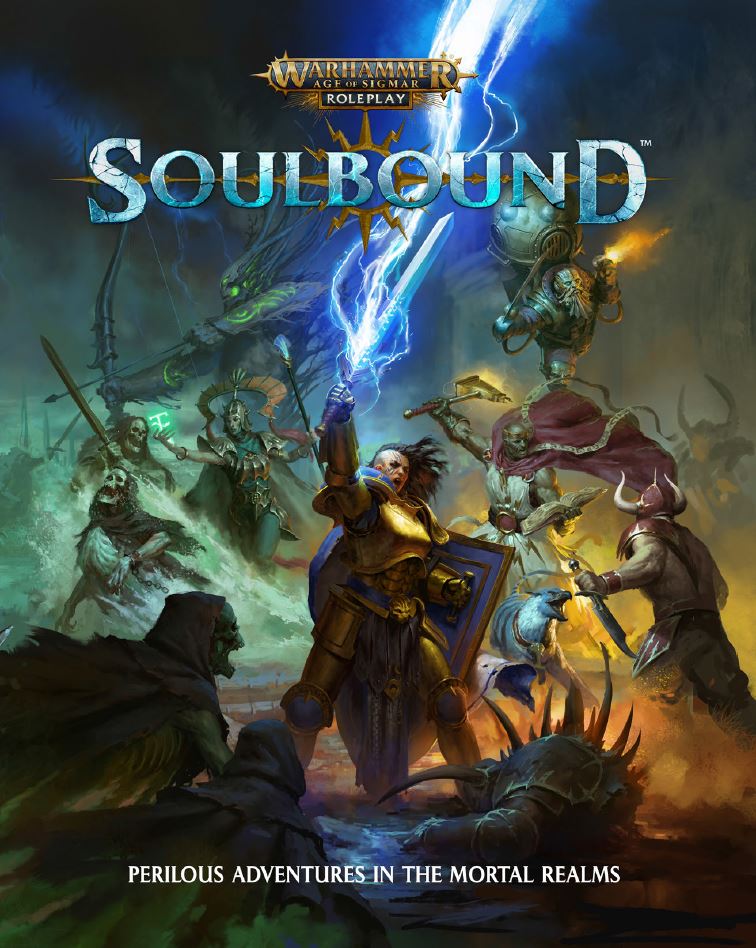
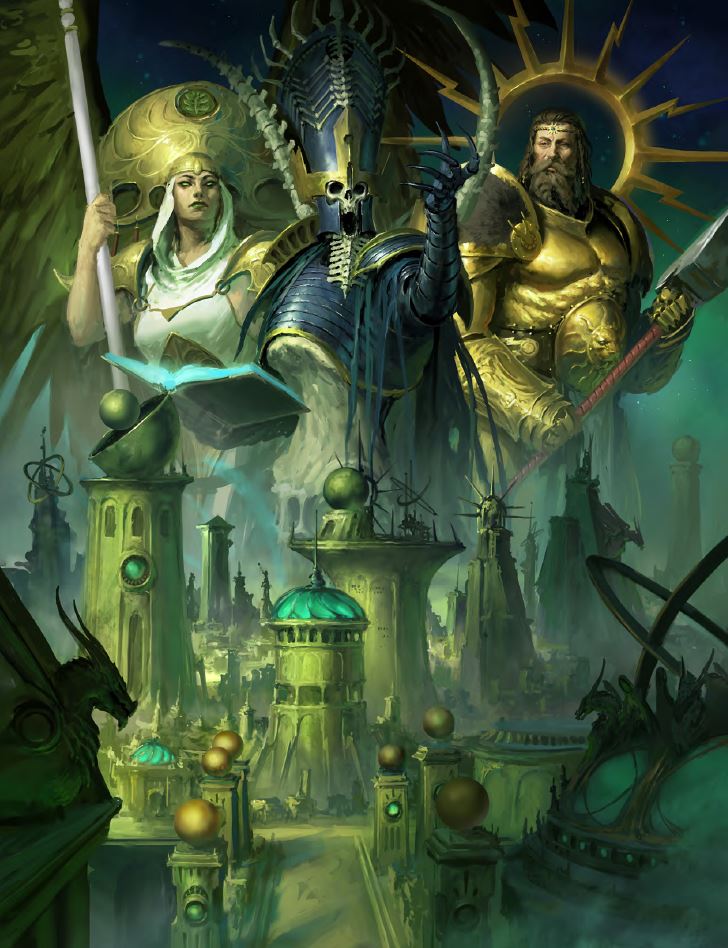
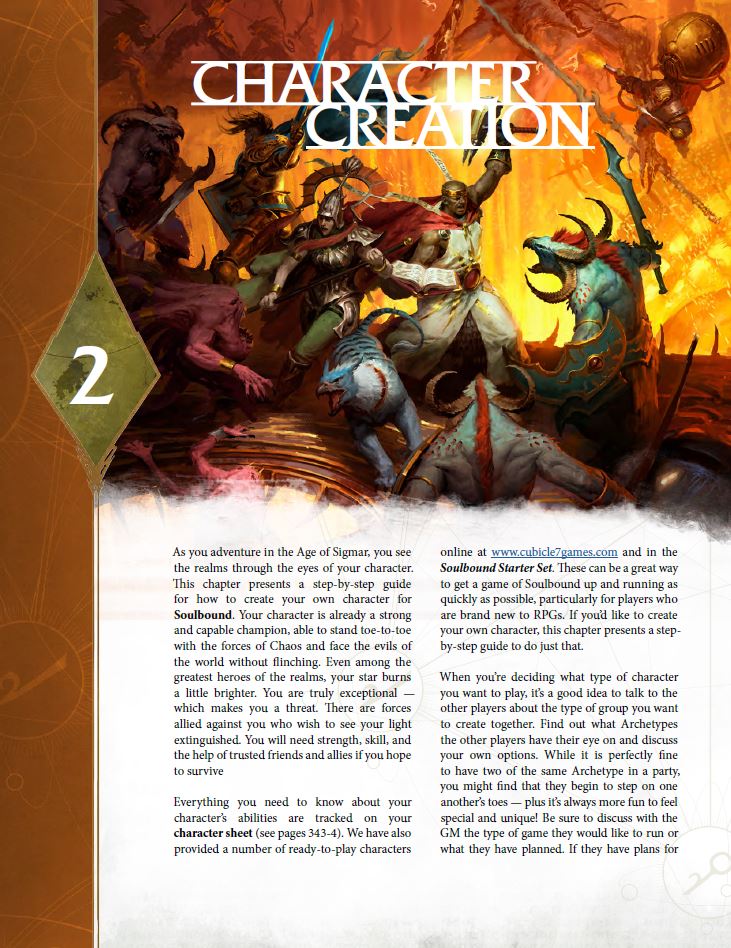
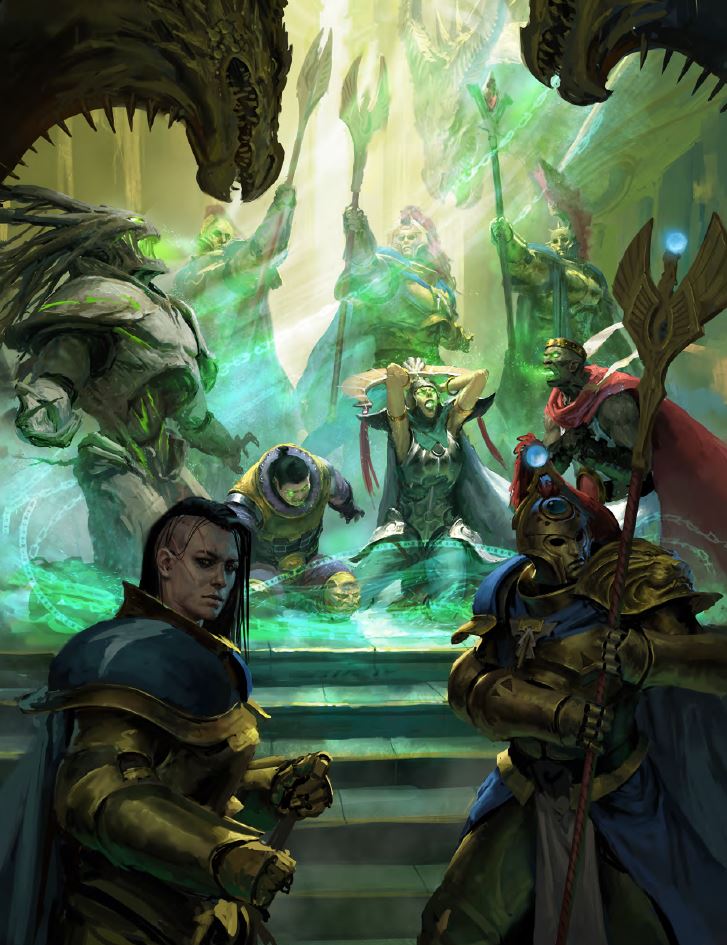
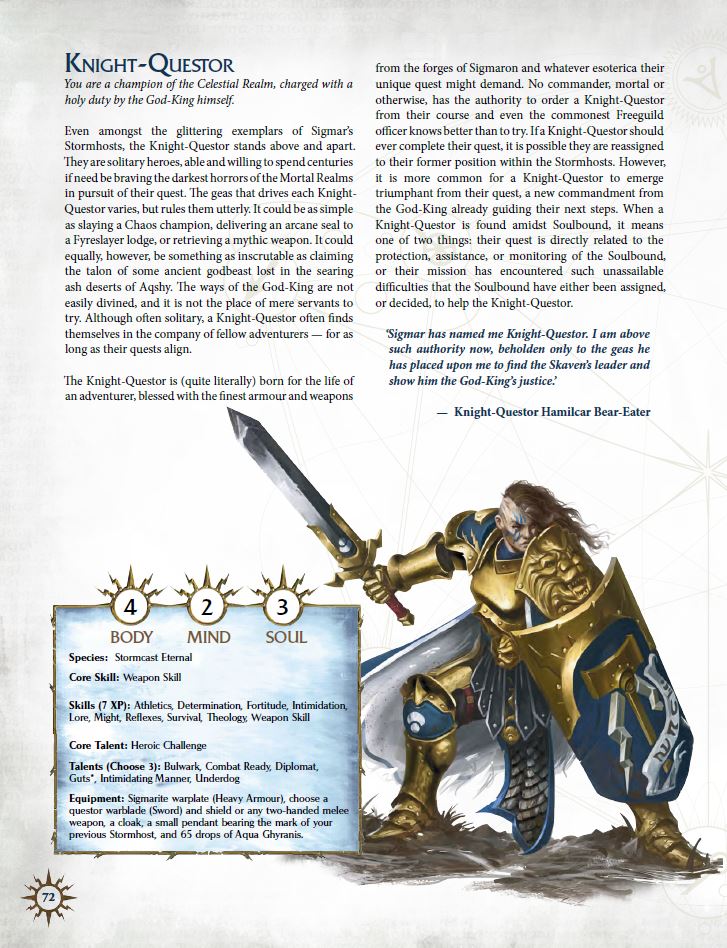

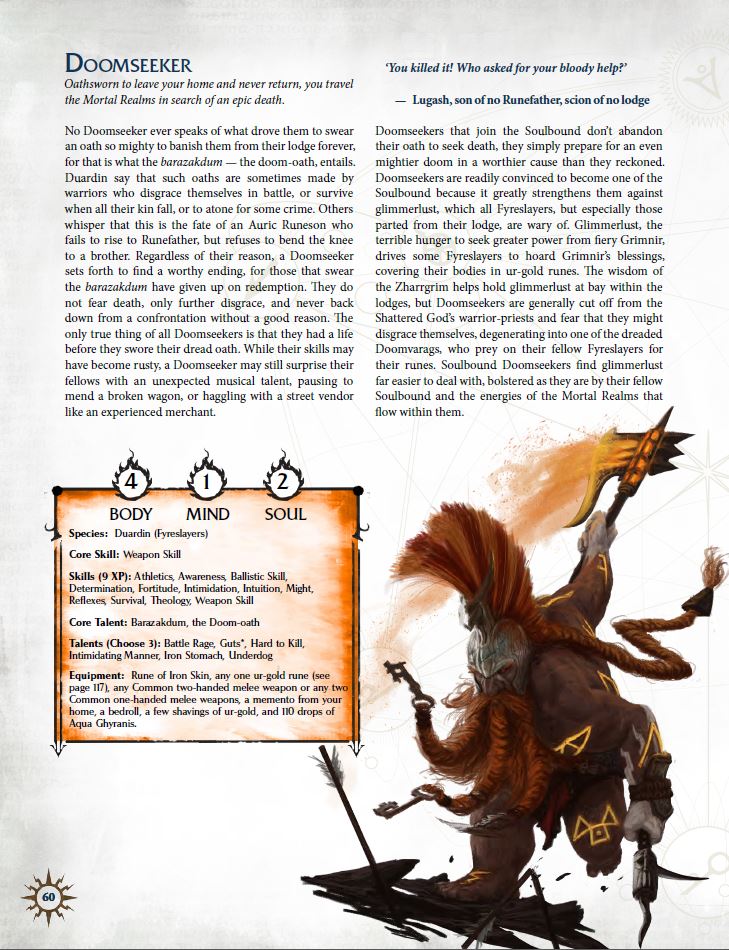
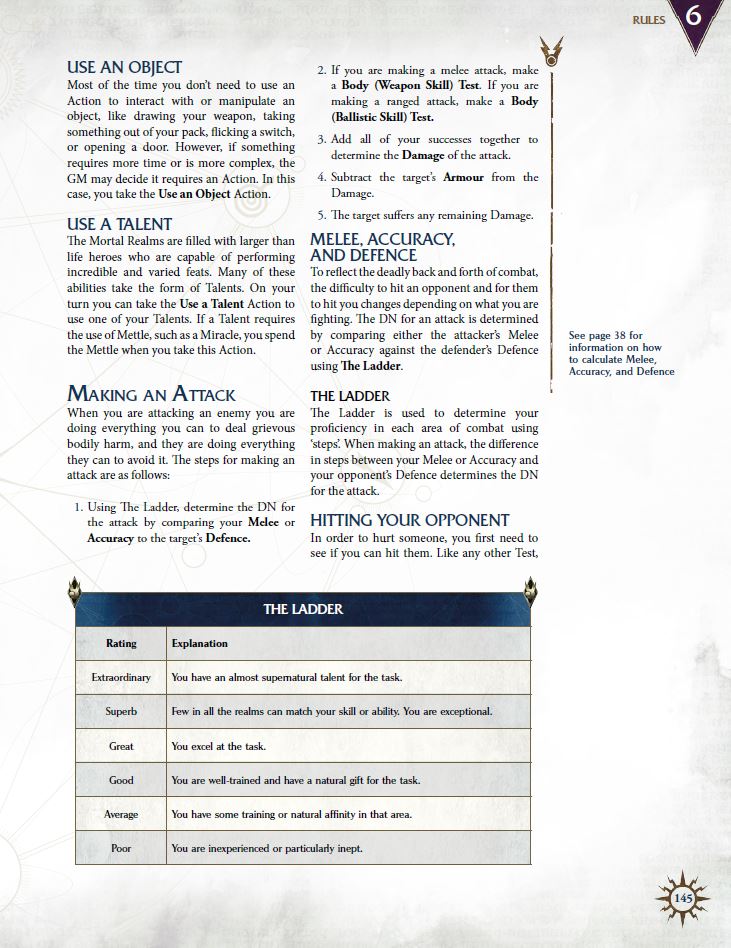
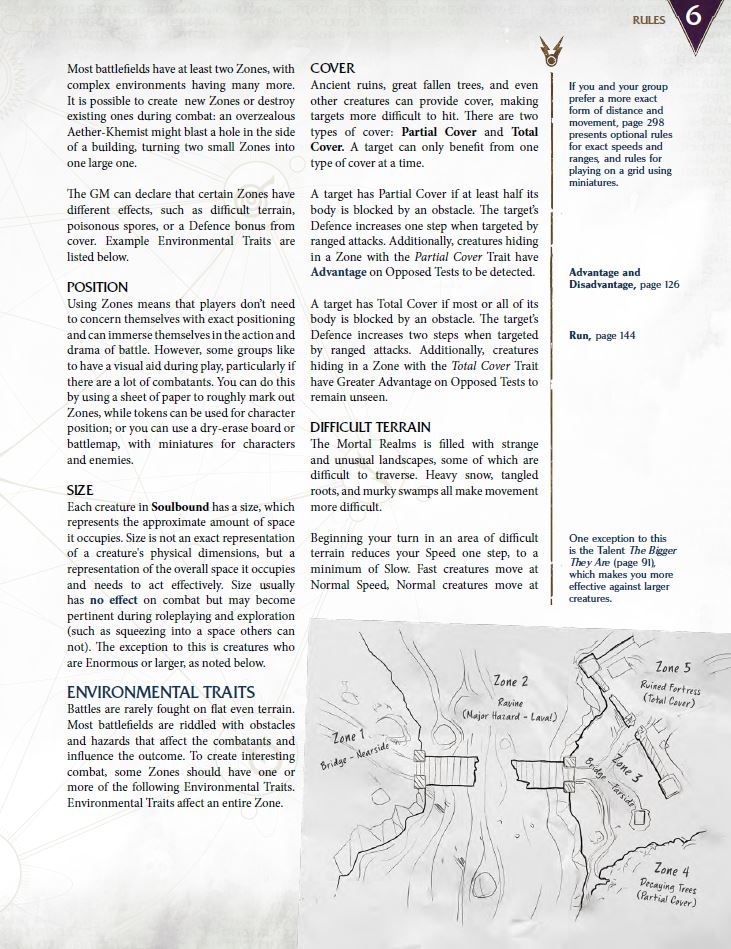
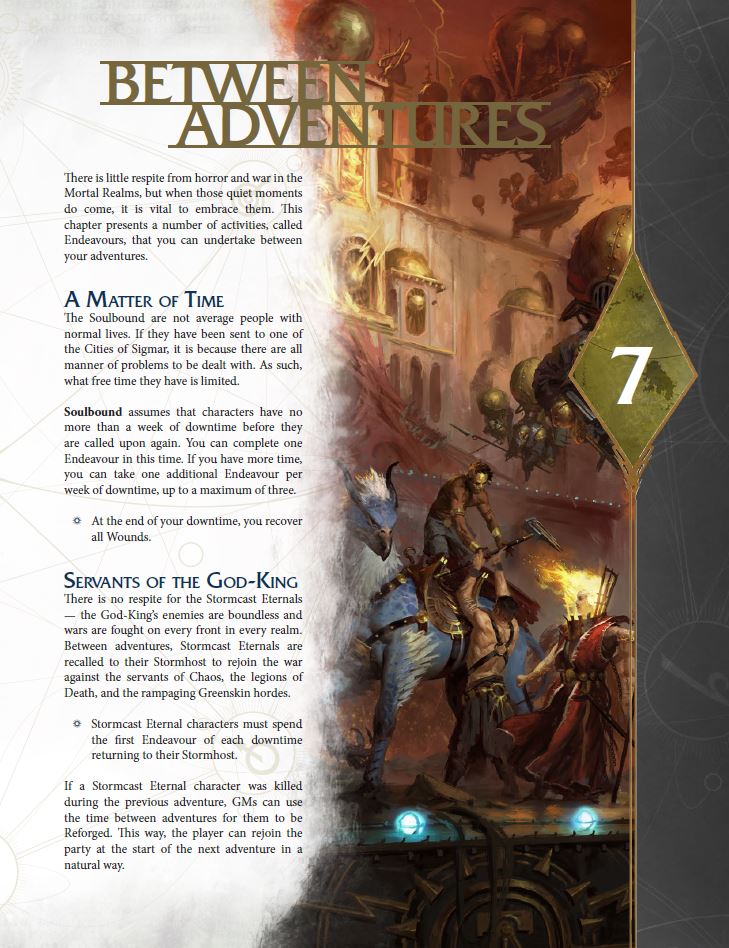
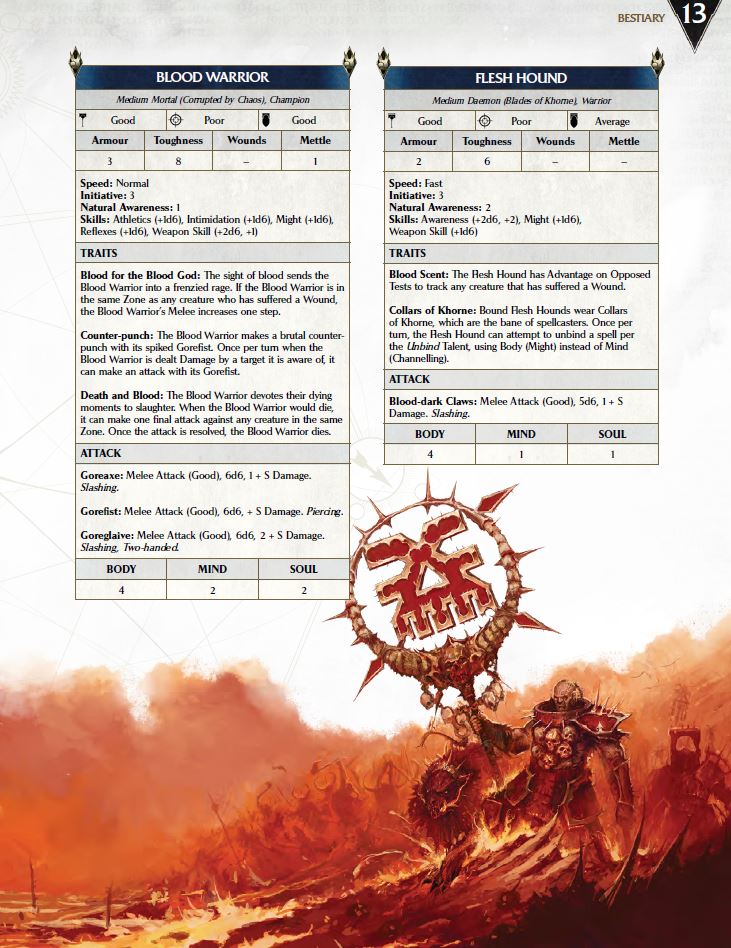
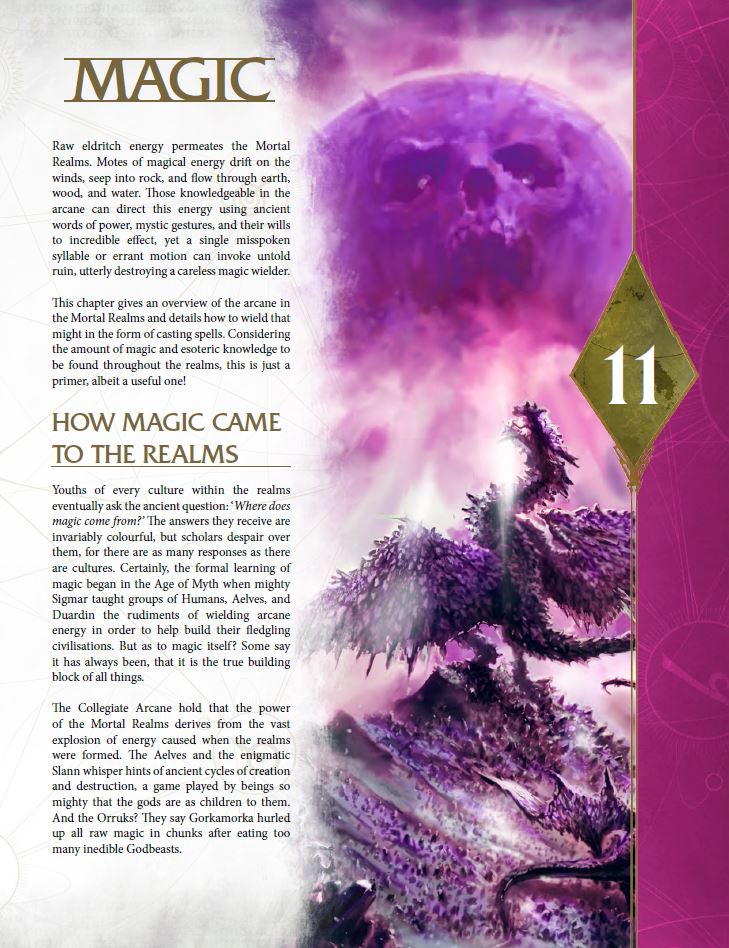
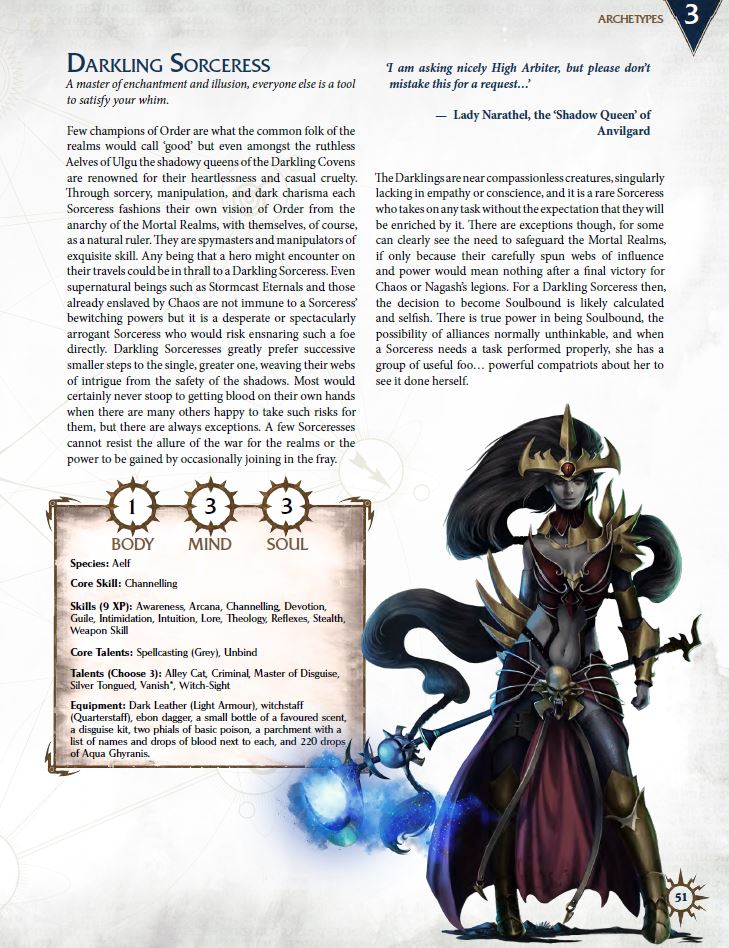




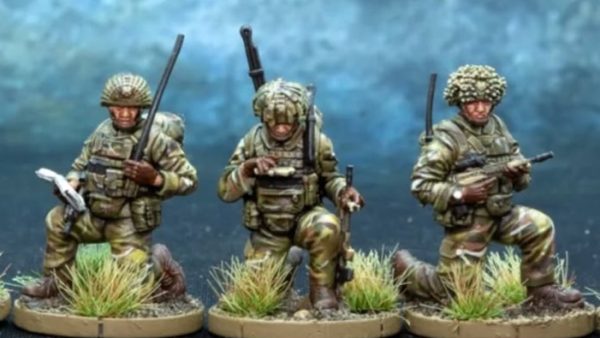
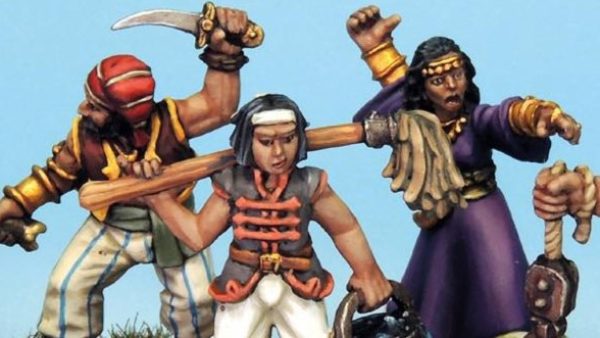
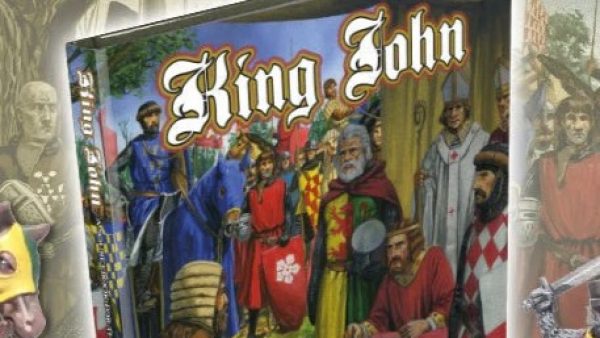
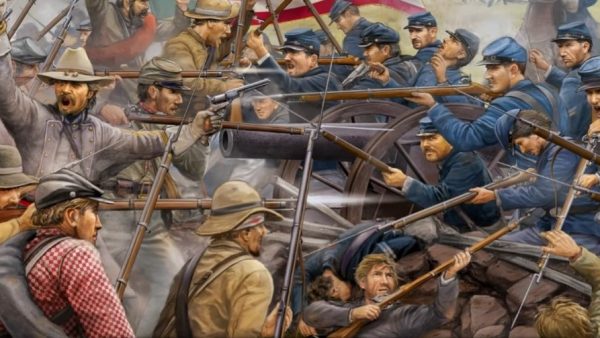


























When I first heard about the end of the world (The Old World that is, not ours… which has not quite ended yet) I was distraught. I loved the old world lore and had some good times in the late 80’s playing WFRP.
The Soul Wars box set enticed me, not the dumbass fantasy marines of sigmar, but the undead army.
Shadow and Pain is a recent purchase, because I liked Morathi and her Daughters, they’re just so nasty and untrustworthy… and now I’m building Drusa Kraeth and her Shadowpact.
The RPG was not appealing though… it seemed too ‘super hero’ for my liking, being used the to deadly Old World of the earlier RPG (even the recent edition seemed to be dumbed down to become more survivable).
However, your review is making me reconsider. I want to see more, but not yet ready to commit to buying. And if I can’t convince all of my group to play (there is some anti GW feeling… that dates back decades) then there’s no point…
I do need to see the rules first though. There’s a free adventure on Drivethru, but no quickstart rules included… which is a cheapskate idea from c7… a free adventure should have enough rules to try a system as RPG’s are too expensive to buy without a trial.
But you made me think twice Ben…
I was much in the same boat as I mentioned early in the review and it took a lot of convincing but I am now on board with The Mortal Realms and what Soulbound offers as a package.
The theme is certainly “the great heroes of the realm” and you have to get your head in the right space to enjoy the off-the-wall stuff that exists within this universe but it does a really good job of feeling each Archetype/Faction feel unique and like they are offering something different to the team of Soulbound; the Binding.
The real winner for me here was the mechanics which, despite the size of the tome, were easy enough to digest and get my head around. They felt like they served up enough to let the game just run which I think is key to many roleplaying games, at least the ones I enjoy.
There is a lot of flexibility in Soulbound even though I can see it being a bit daunting for some. It is certainly a game where I think I personally would run pre-made campaigns, at least to begin with, just so that I got the balance of everything right and fed just the right amount of lore to the players without overwhelming them.
I’ve read through the Starter Set which is pretty darn good and will talk about it more next week. But, it’s maybe worth seeing if you can pick it up (perhaps in a sale if you want to get it cheaper) and giving that a go. I think if that gels well with you then you’ll find the game enjoyable.
Whilst I talked a lot about the power fantasy that Soulbound offers that doesn’t mean that you can’t do something more nuanced. Because of the nature of the game and the world you would be forgiven for thinking it’s all about smashing the big bad guys but there is plenty there for those who love a good intrigue too…with a side of smashing up bad guys.
The starter set I had considered, but from past experience a starter set has severe limits. The D&D and/or Pathfinder ones have only information to level 5 at most and although Soulbound doesn’t use levels as far as I know, I assume there’s a lot of content missing.
If you take a look at most RPG systems you will find the core rules seldom exceed 30 pages. Yes… I know D&D has hundred of pages of spell, but that’s something you refer to as needed… I’m talking about the basic mechanics of character generation, skills and combat.
As for the setting fluff… I’d probably junk most of that and use my own setting which I create to suit myself and players.
Also… most RPG fluff has stupid names for people that you can’t pronounce (Drizzt Do-whatever from forgotten realms for example) and mortal realms is no different… it’s what puts me off reading the fiction… and I deliver mail to people from eastern europe and the far east, so I know about weird spelling and hard to pronounce names… it’s part of my job 🙂
The main thing with the Soulbound starter set is the intro scenario, and the Brightspear setting book. So in that respect it is still useful.
With the rules and characters you get the core rules condensed, and combat condensed, but nothing advanced. Plus no rules for building your own characters/spending xp.
So… in short…. the starter set is useless to me. I use my own setting.
If you like the idea of Soulbound, but want to set the game elsewhere in the Mortal Realms, then yes, the intro adventure is likely not of much use to someone who is a) happy with what and rpg is, and b) has a location in mind.
Not planning on using mortal realms at all. I just like some of the races and miniatures. Creating a world is easy… some myths have it done in a six day week.
Sure. But Soulbound is not being sold as a universal fantasy system. The USP is a system and setting that captures a certain high-dark fantasy in the Mortal Realms. Given that most scenarios to buy for Soulbound are about the £5 mark, and the start is £11 and is a setting book filled with hooks, a starter scenario, and condensed core rules, plus maps etc, it’s not bad.
Now should there be a free rpg day type free intro? Sure, but this year they did that for Wrath and Glory.
WHRFP stands out as a grim fantasy game. I’m just not seeing anything in Soulbound to drag me away from D&D 5th Edition.
Not had any good experiences with 5e.
I ran the starter set which ended in a TPK. First game I played in was part one of Tiamat which sucked. Then we tried the Waterdeep one where it seemed everyone was stupid power level, including a ridiculous barman.
The clincher was the Saltmarsh adventure that I bought for nostalgia and first played in AD&D and introduced me to the hobby. They had beaten it to death with political correctness.
The published adventures for 5e all suck. The game itself does deliver a good fantasy rpg. If you have the core books (PHB, DMG and MM) and later grab Xanathar’s Guide and the new Tasha’s Cauldron books you will be set.
I haven’t bothered with a DMG since 3.5… there’s seldom anything in there that I don’t already know. Xanathar and Tasha just adds stuff that I don’t need like more spells and more archetypes… and I’ve not yet found an archetype that I like.
My biggest gripe with 5e is the feeble skills system. Unless you take a feat, or a class/archetype that grants you additional skills you’re stuck with a handful of skills for the character progression. 3.5 had its faults (the ridiculous number of feats for one), but at least you could learn a new skill if you wanted to.
That’s fair enough. You do have to buy into the lore and the setting if you want to get the most out of Soulbound. However, as someone who was not at all in step with what Games Workshop did out of the gate, it’s worth revisiting now there is MUCH more to The Mortal Realms and Age Of Sigmar.
Additionally, I would say that Soulbound stands out quite a lot as a heroic and generally quite mythic roleplaying game. It’s VERY Hollywood with heroes yelling and you can imagine all the slow-motion moments and lens flare they’d put into the adventures for this game haha.
I will add that if you want a game to compare to, look at Exalted. Awesome ultra epic anime setting, where you play heroes akin to Gilgamesh and Hercules, but all 3 editions have had mechanics that make combat suck, slow, and clunky. And that kills the heroism theme. Soulbound mechanically enables you to play characters able to wipe out entire hordes of enemies.
Case in point, the Idoneth player in my group was able to attack an entire zone of enemies (thanks to how zones work in this game) and hit them with a wave of ethersea, and wash them away.
It’s stuff like that, while you have Slayers and Stormcast facing off one on one with epic bosses and monsters, and you then get a game all about epic battles.
For more politics I point to Anvilgard (which also has a city book for the rpg). That places is a vipers nest of fun.
Peeps might enjoy this let’s play of Soulbound that I played in.
https://www.youtube.com/watch?v=ZHFLcHonmt4
Certainly worth taking a look at to see the game in progress!
It’s an interesting situation in that Cubicle 7 will see first hand what happens when you put Warhammer up against Age of Sigmar.
WHFB has a setting that has a sizable fanbase, a heap of nostalgic good will, 30+ years of stories and lore in the setting.
Age of Sigmar is newer, just as popular (or maybe even moreso) than WHFB was, but lacks the depth of background. This means the authors have greater freedom to game in the considerable gaps but I doubt GW will let them do whatever they want.
The lore of Warhammer Fantasy is indeed deep but I will say that what’s presented here in the Soulbound book plus what I’ve read around the more lore, a couple of books and many, many Wiki pages have been pretty astounding. There is a lot to get your teeth stuck into with Age Of Sigmar’s lore now – admittedly not as much – but plenty for someone wanting to run a roleplaying game where often times you need to know a lot more than what does your opponent’s army hit on!
The only real issue I have with the setting is the Stormcast. It’s hard to imagine why you wouldn’t take a god-forged superhero (or fantasy Space-marine) who can’t be permanently killed. Other than that I think there’s a pretty broad range of things GMs (and players) can do.
They do have their drawbacks. They can’t actually become part of The Binding within a group of Soulbound because of their oaths to Sigmar so they are almost like outsiders in the group, despite being such a big part of the narrative and lore – this means they don’t benefit from some gameplay mechanics too from the group. Admittedly, they are also mighty badasses.
That, twinned with the Reforging process and what it does mentally to the Stormcast is a fascinating concept I want to see looked at more – and they do venture into that in Soulbound.
It will greatly vary in terms of what that means from group to group though for sure – I can see a lot of people loving the more quirky and odd choices available because of the new factions.
I would also add you only have to look at the amount of lore we are getting through books since Soul Wars, in particular the recent Broken Realms, and the Mortal Realms is becoming a complex place for these heroes.
One thing you can look at is the city of Anvilgard which now has a source book, play through the published adventures, and then run a story about the Soulbound during the events of Broken Realms: Morathi. Depending on the party composition it would bring up some interesting discussions between characters.
Has Cubicle 7 collaborated with Evil Hat Productions? The whole engine is nearly identical to FATE core.
To be honest, these similarities actually reassure and encourage me to look into the game, knowing now that it isn’t some tangled mass of overwrought rules and tables.
But really it does have the smell of cribbing somebody else’s work all over it.
It’s nothing like FATE core.
So in Soulbound you have 3 attributes, Body, Mind, Soul.
Then there is a core list of skills, ranging from Melee, Survival etc.
Skills have two types of ranks. Training and Focus.
When it comes to rolling dice to achieve things you roll Attribute + Skill Training as a dice pool. You are looking to beat a target number to get a success.
Some actions need multiple successes to work.
Focus is basically a pool of +1 modifiers you can use to promote die results. E.g. I roll 5 dice vs TN of 5, I get a 3,3,4,5,6. So 2 successes. I have a Focus in the skill for that roll of 3. So I can promote the 4 to a 5, and the 3 to a 5, giving me 4 successes total.
If I was to compare it to a system it is still much more like Vampire 5th edition.
I will also add, that technically game mechanics can’t be patented. Dice mechanics are maths, and maths can’t be subject to copyright, patents etc. Only their presentation in a unique product i.e. how it is described or written down.